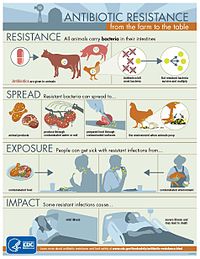
Photo from wikipedia
From September 1 to October 27, 2015, an outbreak of bacillary dysentery occurred in the Shenzhen Children Welfare Institute (SCWI). The shigellosis was uncommon in Shenzhen and no related outbreak… Click to show full abstract
From September 1 to October 27, 2015, an outbreak of bacillary dysentery occurred in the Shenzhen Children Welfare Institute (SCWI). The shigellosis was uncommon in Shenzhen and no related outbreak was reported during the last 5 years. An epidemiological investigation was conducted and the children and nursing workers in SCWI were surveyed for gastrointestinal symptoms; 28 of children reported having a diarrheal illness. Rectal swabs or fecal specimens from 14 case patients and 24 nursing workers or cook, as well as 17 swabs from implicated items were collected and examined for Shigella, Vibrio parahaemolyticus, and Salmonella. Susceptibility testing and pulse-field gel electrophoresis (PFGE) were performed on the Shigella isolates. The multiple-antibiotic-resistant Shigella flexneri 2a was isolated from 10 ill children aged less than 5 years. The source of the outbreak was most likely a new welfare child transferred from an institute in another county and the secondary transmission of the illness was facilitated by the limited activity space and the cohabiting of ill and well residents. The outbreak was controlled after quarantine of ill residents, introduction of new antibiotics and the improvements of hygienic condition. This was the first time that shigellosis outbreak was reported at such settings in Shenzhen and the results of this investigation underscored the need for adequate precautions to prevent secondary transmission of multiple-antibiotic-resistant strain in the welfare setting.
Journal Title: Journal of infection and public health
Year Published: 2017
Link to full text (if available)
Share on Social Media: Sign Up to like & get
recommendations!